This truly is the best recipe for dulce de leche from scratch, that wonderful sweet milk jam from Argentina, where I'm from. In this post, you'll find the traditional way of making it, and the most useful tips ever that were handed down from generations in my family making it.
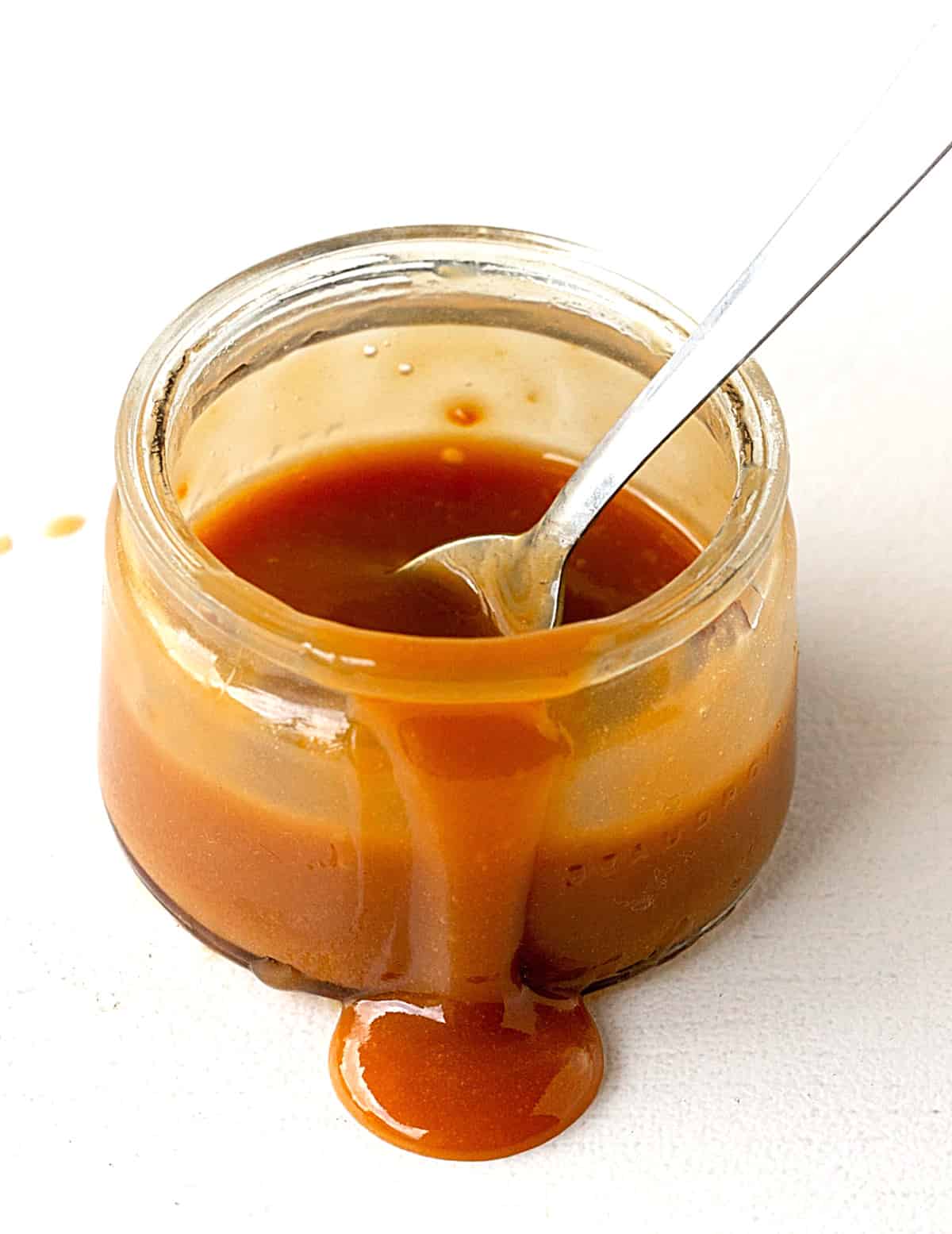
Are you familiar with dulce de leche?
Let me start by saying this is an area I'm familiar with.
Dulce de leche arguably hails from Argentina (we have an ongoing discussion with our neighbor Uruguay about that, but today, I'm standing my ground) and generations before me have made it from scratch, perfected the recipes, and understood its ins and outs.
Our most traditional desserts are made with it, like alfajores, and we add it to almost everything, from banoffee pie to carmelitas.
What can I say about dulce de leche? I'm a huge fan. Most of us are here.
Several recipes use it, but this is the first time posting the from-scratch recipe. I can't believe it took me so long!
Let's start with the basic recipe, the one my grandmother and many others before her made. It's a simple process, and I have the best tips to make it easier.
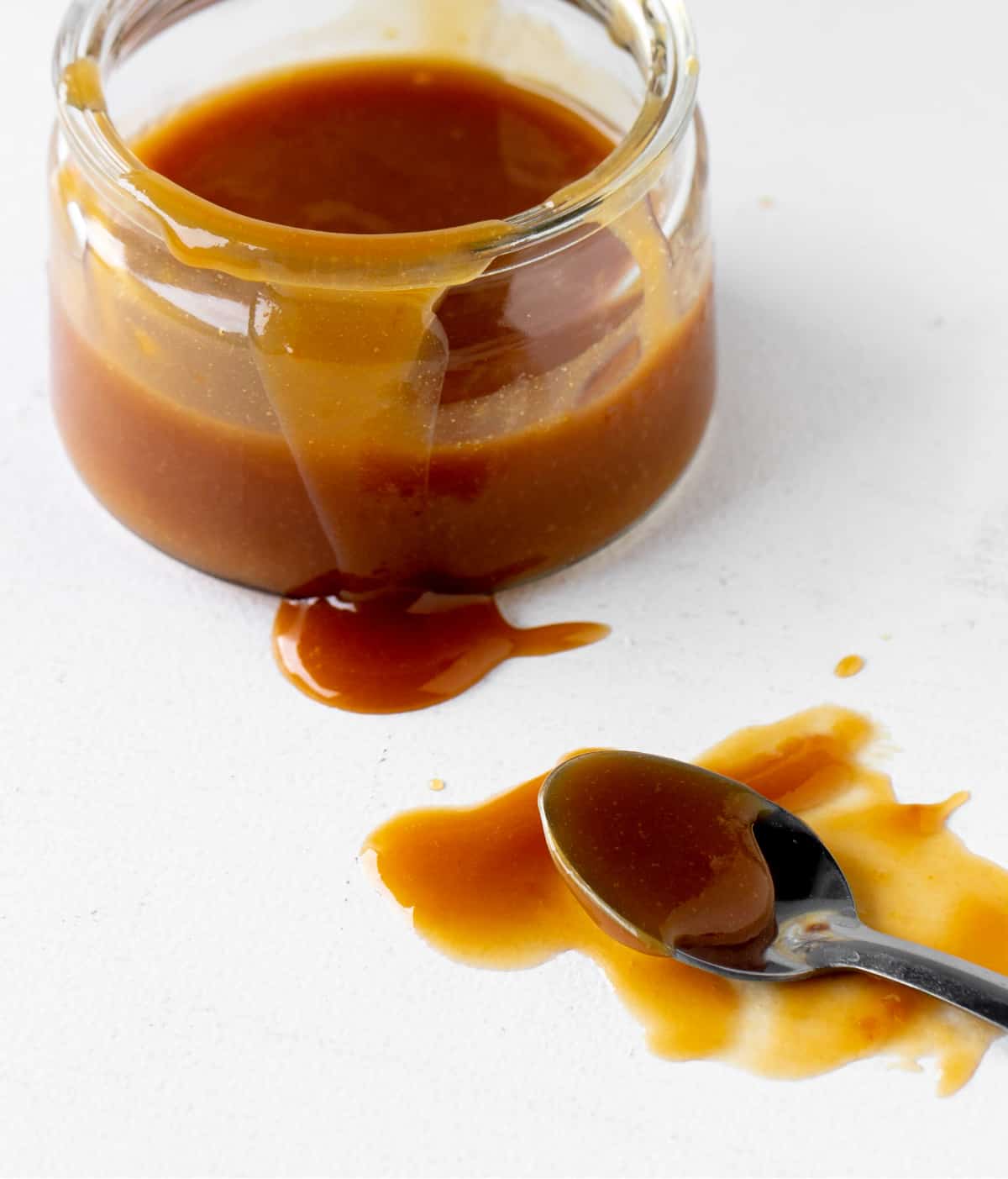
Ingredient list
They are few, and you probably have all of them in your kitchen right now.
- Whole milk.
- White granulated sugar: I tried it with powdered sugar, but the result is grainy. Brown sugar might work, but sometimes the consistency is not correct.
- Baking soda: this ingredient is crucial if you want a brown color. Use more for a deeper caramel color and less for a more tea-with-milk type of hue.
- Vanilla extract.
- Salt: it's optional, but a small pinch deepens the flavor and makes this milk jam so much tastier!
Quantities are listed on the recipe card towards the end of this post. The Ingredients page has more details and lists the brands we use.
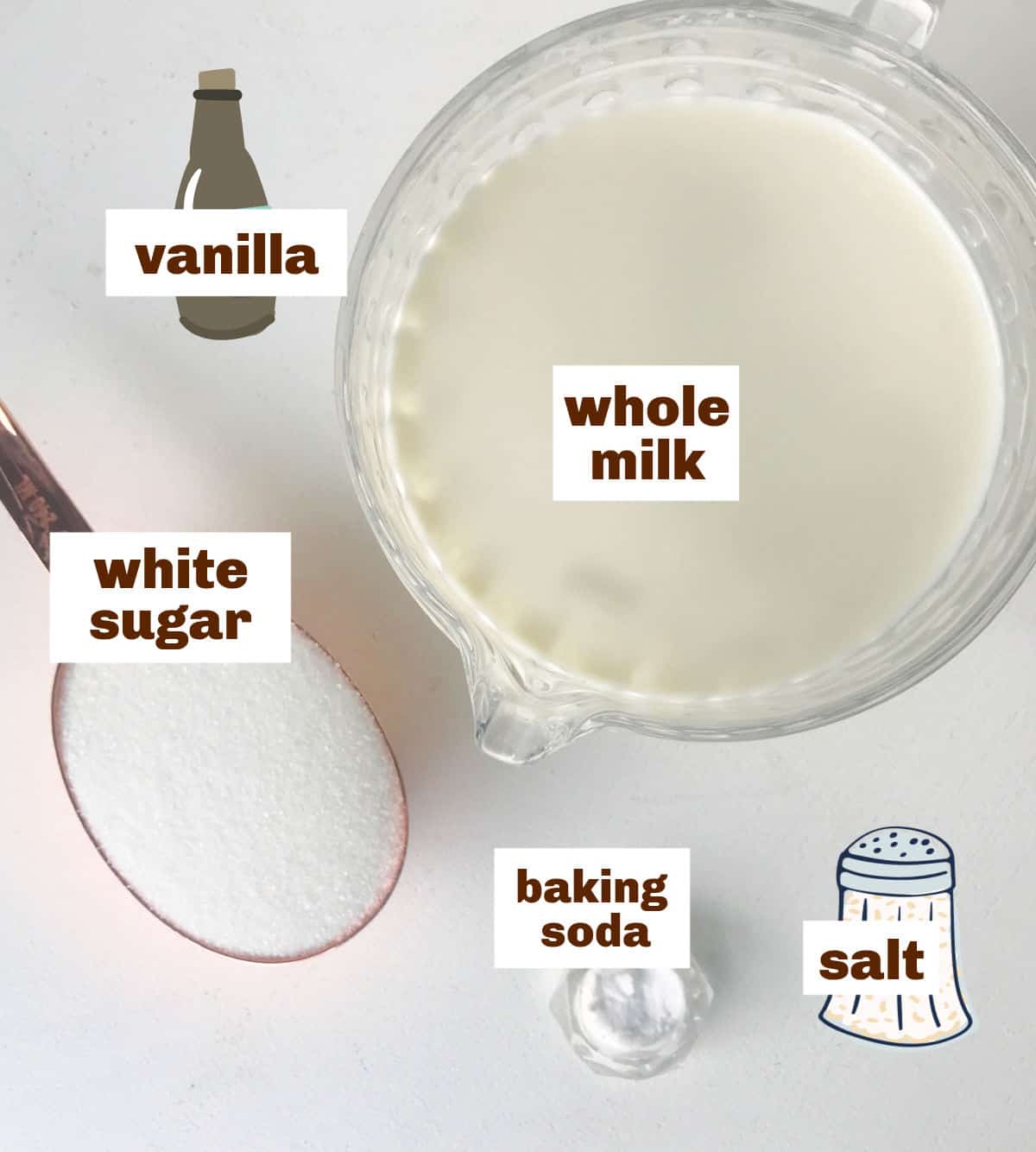
Kitchen Notes
- Saucepan: It should be deep because the milk can creep up quickly when it boils, and you don't want it to spill. And heavy-bottomed because there's way less possibility of it scorching or sticking.
- The plate inside: this is a peculiar tip and you can see it in the video tutorial above, but it's what they did in the old days, back when most of the food was homemade and took all day. My grandmother used glass marbles, but those are hard to find nowadays. The next best thing was a plate upside down, though I also used the super small glass things I showed in the video. The idea is to have something that moves around, mimicking stirring, so you don't have to do it manually. Because you need to stir very often otherwise.
- Ingredients: use whole milk and white sugar. They work much better than any other variation. Don't be tempted to use powdered sugar as the final result will be grainier. I know, it sounds like the opposite will happen as powdered sugar is so soft, but it doesn't work.
- Ice water: cooling the dulce de leche over a bowl with ice water (as shown in the last steps in the video below) will not only help it cool down faster but also avoid crystallization, so the jam has less chance of being grainy. If you skip this tip, you'll also make a great batch of dulce de leche, but the details help.
From scratch
This is my favorite way because, as with anything made from scratch, you know the quality of your ingredients.
Step-by-step VIDEO
From sweetened condensed milk
This is an easy alternative to the from-scratch method in this recipe. And the results are fantastic.
The first time I made it from a can, I was an anxious teenager who didn't let it boil enough and removed it halfway. The result was part dulce de leche and part thick condensed milk.
- Boiling the can: this is a super simple step where you simmer the can of condensed milk for 2 and ½ hours. Our recipe for making dulce de leche from a can works great and has all the details.
- In the oven: the David Lebovitz homemade dulce de leche recipe is the best alternative in my opinion, and stands the test of time because it doesn't matter if your condensed milk comes in a can or a plastic container, and it can be made in an oven.
- In the microwave or stovetop: I tried both, and it doesn't work. The dulce de leche doesn't happen before the milk boils or becomes a solid mess.
Variations
- For darker dulce de leche, use more baking soda, up to a teaspoon per 4 cups (1 liter) of milk.
- Cream: I sometimes add cream, 1 tablespoon per cup of milk. It renders the jam somewhat creamier and more unctuous.
- Sweeter: you can add up to ¼ cup more sugar per cup of milk.
Storing
- Refrigerator: this is the best way to keep dulce de leche, and it keeps indefinitely, or pretty much. I never saw a dulce de leche go bad. What does happen is that it will eventually turn grainy due to crystallization and dry out. But for this to happen, it usually takes months.
- Containers: I like glass jars with tight fitting lids, they are the best way to keep it. Plastic containers also work.
You can, in theory, freeze it. But there's no point since it keeps for so long in the fridge.
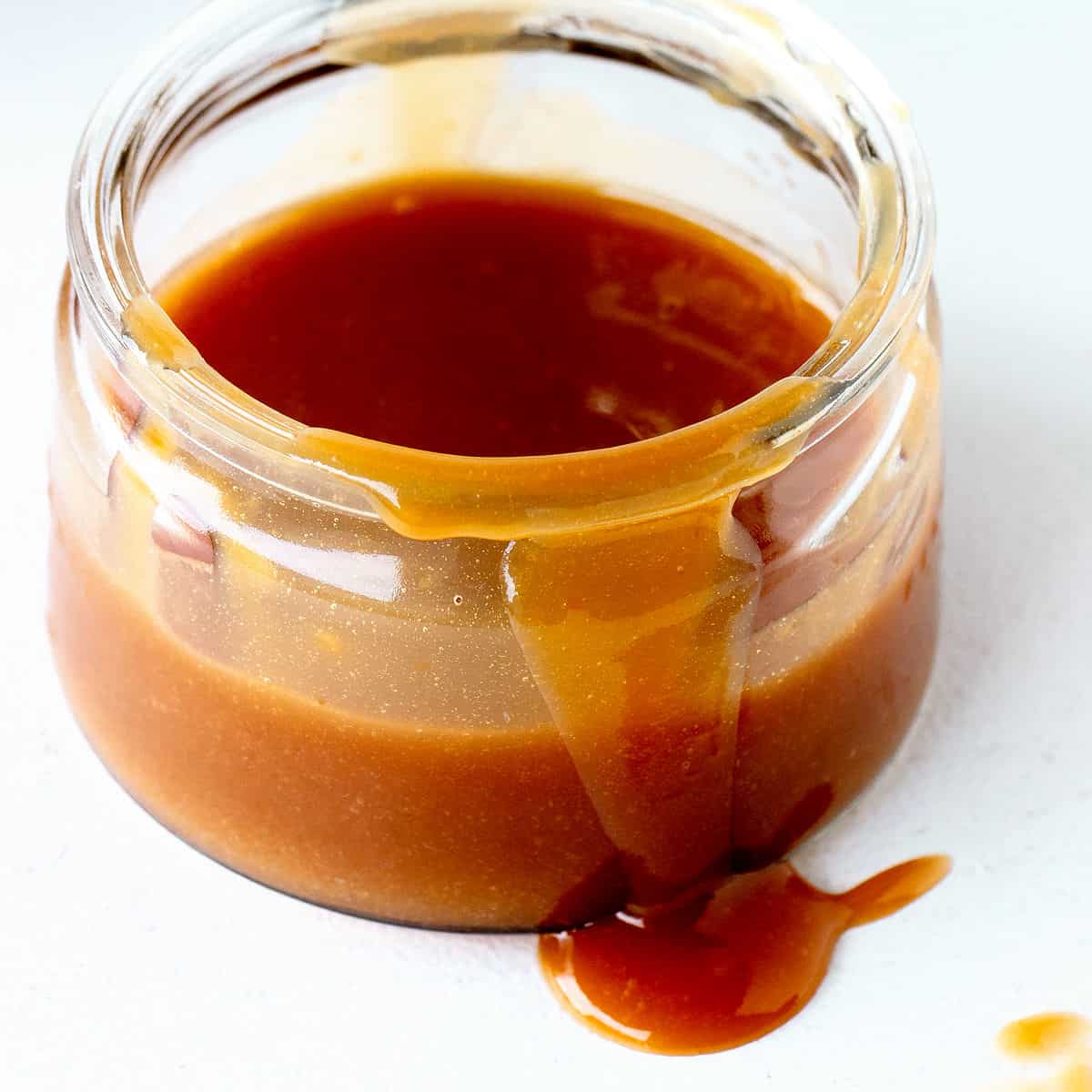
Uses for dulce de leche
- On its own: a spoonful of dulce de leche as dessert is common among fans, especially my father.
- Banana or apple slices: serve them alongside a dollop of dulce de lehce or drizzled on top, and you're in for a treat.
- Fillings for chocolate and vanilla cake: these flavor pairings are fantastic and you should try them asap!
- Sauce: thin it slightly with water, milk, cream or liquor and use it to top ice cream, apple crumble, granola, pancakes, waffles and french toast.
- Cookie sandwiches: almost any cookie can be filled with dulce de leche, from chocolate chip to walnut to chocolate butter cookies.
- Toast: slather a piece of homemade bread with butter and dulce de leche.
- Old-fashioned desserts: from flan to rice pudding and floating island or bread pudding, dairy-based desserts turn extraordinary when served with this sweet jam.
- Substitute: most peanut butter or Nutella recipes can be made with dulce de leche. I regularly make the chocolate oat bars, carmelitas and our wildly popular peanut butter brownies with it (same volume).
For fillings
There are two types of dulce de leche: regular and pastry dulce de leche (repostero in Spanish) which is thicker and made especially for fillings.
- Regular dulce de leche doesn't have the right consistency for filling. You should always use pastry dulce de leche. For example, when you make the cornstarch Alfajores recipe or this easy banoffee cake, the dulce de leche is too thin, and it drips down the sides, making a mess. Not good.
- Pastry dulce de leche is thicker, similar to commercial peanut butter, and used for fillings because it stays put and doesn't drip. You can buy it online, and you're good to fill whatever you want. Amazon sells the most popular one here, dulce de leche repostero Vacalin
- Thickening regular dulce de leche: but I also devised a way to thicken it without changing the flavor much. And that is by adding cornstarch. It's all explained in the recipe. And there is a shortcut that works as far as thickening goes, but the flavor is mellower, which might be completely fine. Also, I haven't tried it, but I think dulce de leche La Lechera, which comes in a can similar to condensed milk, is quite thick.
Recipes with dulce de leche
This dulce de leche is not the type you use for fillings as it's too fluid. For that, you need to buy the thicker type that holds well and doesn't drip. I always use dulce de leche repostero Vacalin.
Let me know in the comments below if you made this recipe and loved it and if you had issues so we can troubleshoot together. I love to hear what you think, always. Thanks for being here. It's much appreciated.
You might also consider subscribing to our FREE Baking the Best email series and our regular newsletter. Or connect via Facebook, Instagram, and Pinterest.
As an Amazon Associate, I earn from qualifying purchases. Please read my disclosure policy.
Print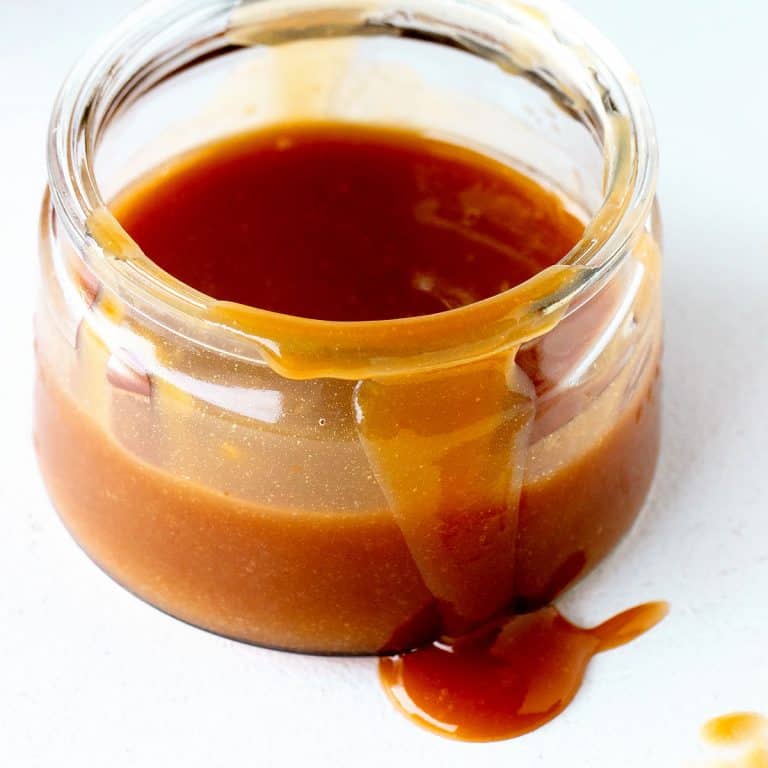
Homemade Dulce de Leche (authentic recipe)
This truly is the best recipe for making dulce de leche scratch, that wonderful sweet milk jam from Argentina, where I'm from. In this post, you'll find the most useful tips ever that were handed down from generations in my family making it.
- Total Time: 2 hours 5 minutes
- Yield: 1 ½ cups
Ingredients
For regular dulce de leche:
- 4 cups of whole milk
- 1 cup white granulated sugar
- ½ teaspoon baking soda
- 3 tablespoons heavy cream (optional; I use it because it makes a richer dulce de leche)
- Vanilla drops (optional)
- Pinch of salt (optional)
For thicker dulce de leche:
- 1 cup regular dulce de leche (homemade or store-bought)
- 1 tablespoon cornstarch
- ½ tablespoon milk
Instructions
For regular dulce de leche:
- Heat the milk (and cream if using) over medium heat in a large saucepan with high sides and double or triple bottom.
- Add the sugar when it’s warm and mix.
- Add the baking soda and stir until it dissolves.
- When it starts to boil, lower the heat to a minimum but keep it simmering.
- At this point is where you can add a plate upside down, glass marbles, or some other small glass object that can withstand the heat. What they do is move around so it ‘stirs’ the mixture and also helps with crystallization.
- Let it reduce, stirring every so often, about an hour, or an hour and a half. This depends on the amount of milk you’re using and the amount of heat.
- It darkens from the bicarbonate and thickens. If you added a plate you can stir once in a while, but it not, you should stir more often.
- At some point, usually an hour from the moment it starts to simmer, it gets quite dark and thickens. At this point, it’s almost ready. Maybe a few minutes more. Make sure you take out the plate and stir constantly during these last moments.
- If you put a little on a plate it will run immediately, be quite liquid. It will thicken a lot as it cools and even more in the refrigerator.
- Remove from the heat, add vanilla and salt if using, transfer to a bowl and let cool. If you stir over a bowl with ice water it will cool faster and generally makes it creamier because there’s a smaller chance of crystallization.
- Whisk at the end before refrigerating to make it as creamy as possible.
- Fill a jar and keep refrigerated.
For thicker dulce de leche:
Option 1
- Mix cornstarch and milk in a small bowl or cup.
- Put the dulce de leche in a small saucepan over low heat.
- Stir constantly, and when the dulce de leche becomes more liquid, add the cornstarch slowly while stirring with a wooden spoon.
- Bring the mixture to a slow boil, stirring all the time. You don't want the mixture to stick.
- Boil for about 2 minutes, being careful it doesn't burn in the bottom of the pan. Check that it has somewhat thickened, but remember it will completely set after it's cooled and refrigerated.
- Let cool completely and refrigerate for 1 hour before using, or for several weeks in a closed jar.
Option 2
- Melt 50g (3 ½ tablespoons) butter in a medium saucepan.
- Add a can of condensed milk (400g / 14oz) and 200g (7oz) regular dulce de leche.
- Stir over low heat until it thickens and let cool before using.
Notes
Milk - use whole milk for the best results. This is a jam and the richness and fat in regular milk make for a more luscious product.
Cream - it adds even more richness, so I hardly make it without if I have some at home.
Sugar - regular granulated sugar is what you want. I did try it with powdered sugar but the result is grainy. Brown sugar might work, but sometimes the consistency is not right.
Baking soda - this ingredient is crucial if you want a brown color. Use more for deeper caramel color and less for a more tea-with-milk type of hue.
Vanilla and salt - these can be categorized as optional, but I think a few drops of vanilla and a small pinch of sea salt deepen the flavor and make this milk jam so much tastier!
Saucepan: it should be deep because the milk when it boils can creep up quickly and you don't want it to spill, and heavy-bottomed because there's way less possibility of it scorching or sticking.
The plate inside: this is a peculiar tip and you can see it in the video tutorial above, but it's what they did in the old days, back when most of the food was homemade and took all day. My grandmother used glass marbles, but those are hard to find nowadays. The next best thing was a plate upside down, though I also use the super small glass things I show in the video also. The idea is to have something that moves around, mimicking stirring, so you don't have to do it manually. Because you need to stir very often otherwise.
Commercial dulce de leche: you can buy it online. The best one available to use for fillings right now is Vacalin dulce de leche repostero, which is the one we use here, so I recommend it. Others that are usually available for the regular type are Cachafaz Dulce de Leche, Havanna Argentina Dulce de Leche sauce, and DDL&Co. premium dulce de leche.
- Prep Time: 5
- Cook Time: 120
- Category: Sauces
- Method: Stovetop
- Cuisine: Argentinian


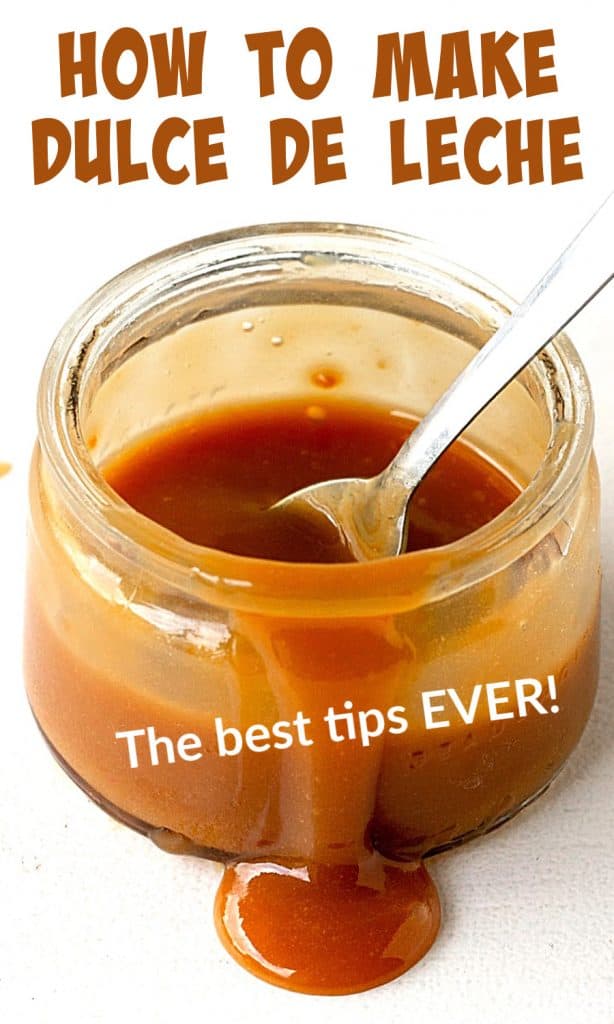
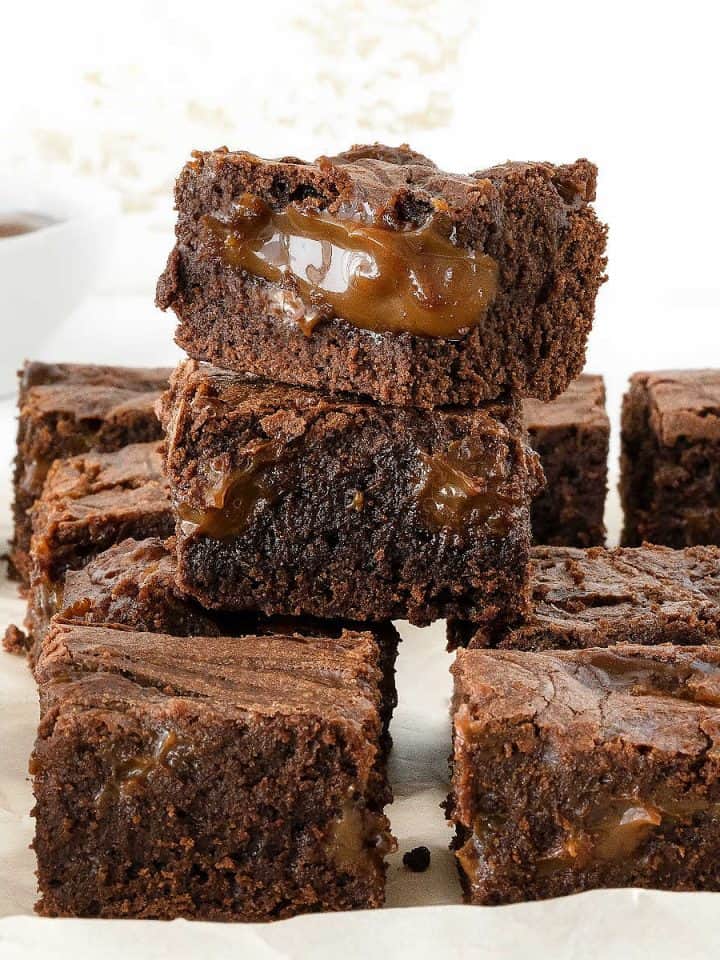
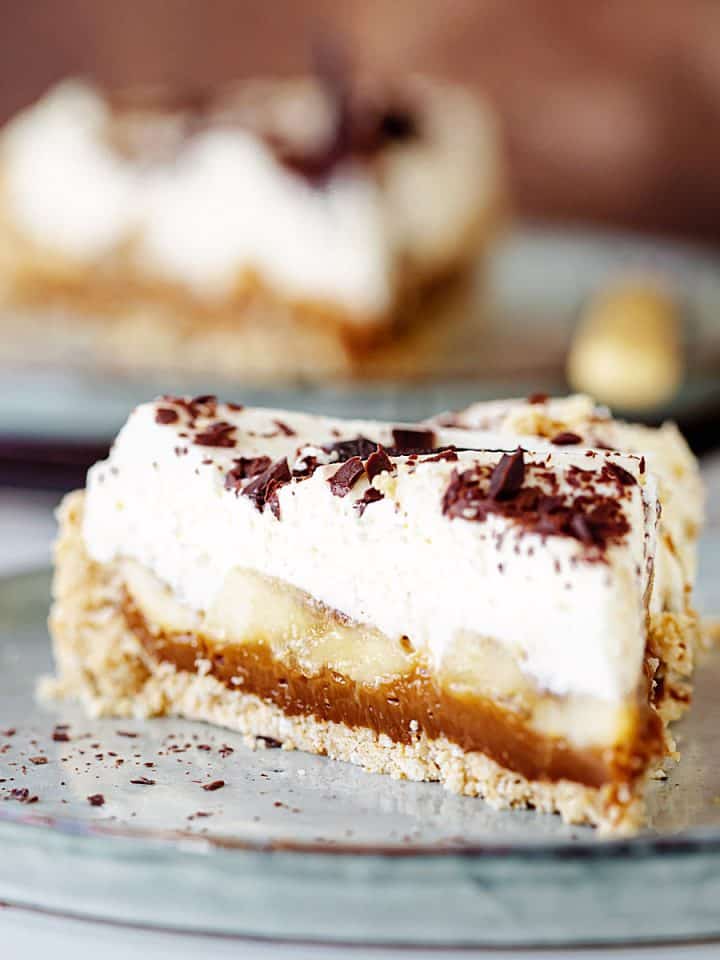
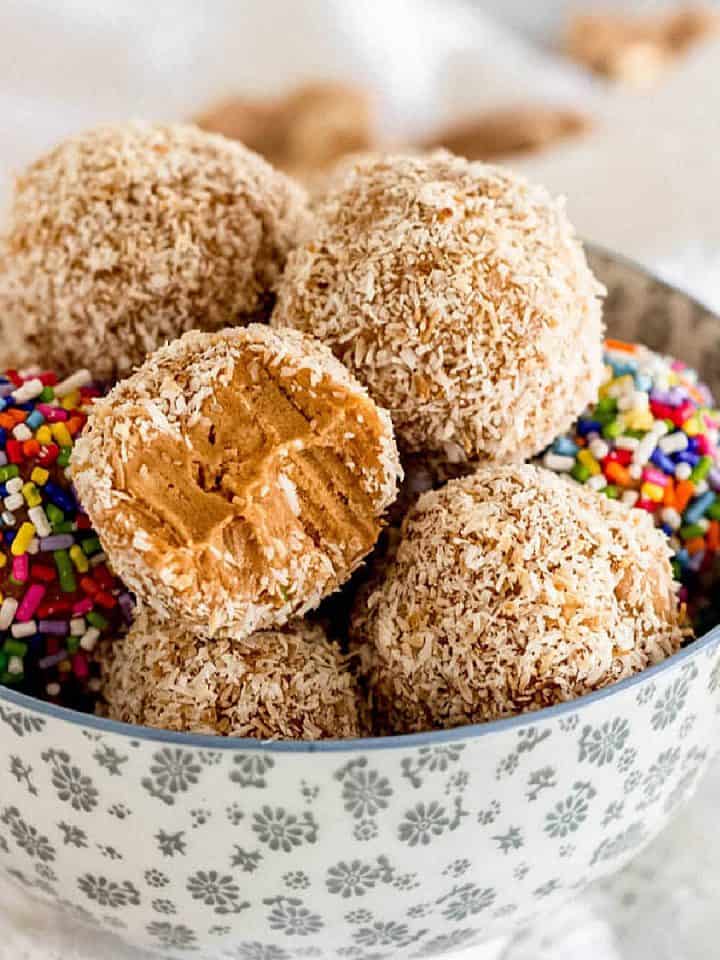
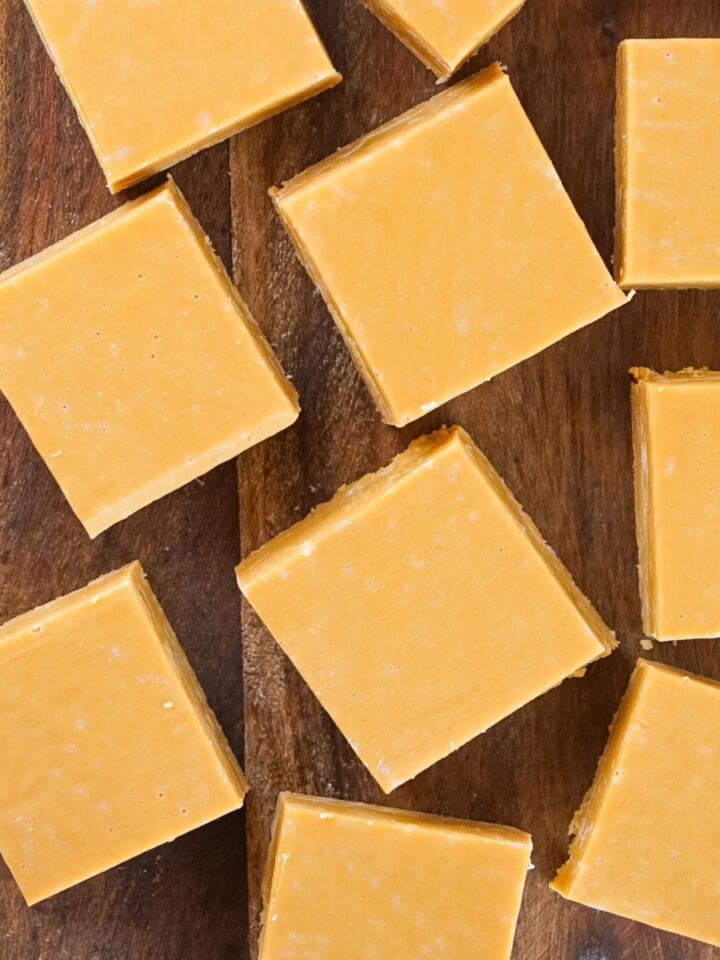
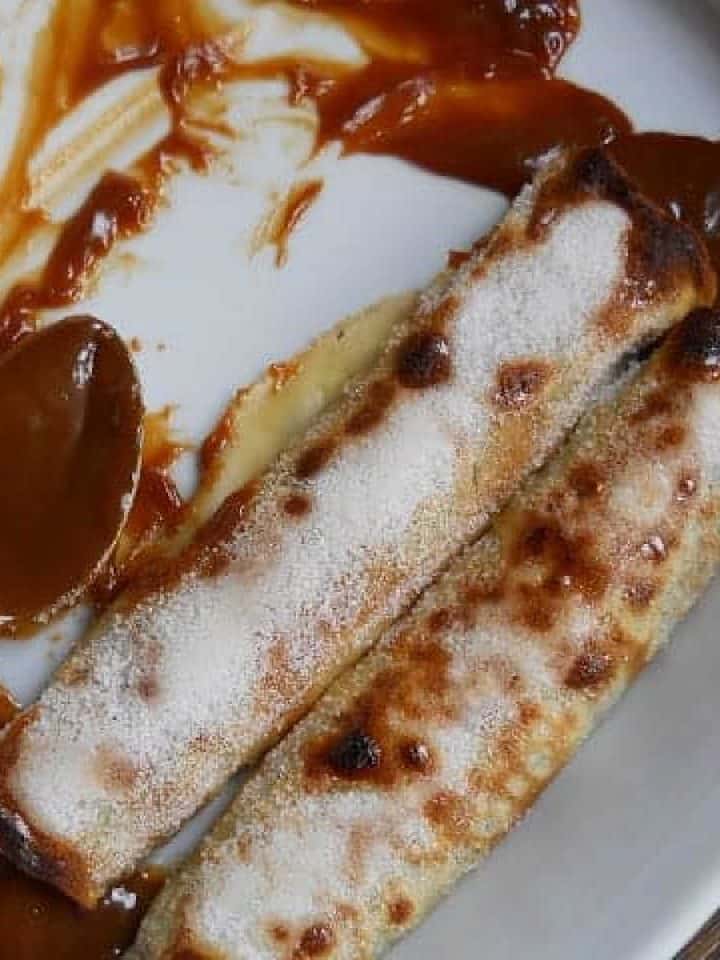
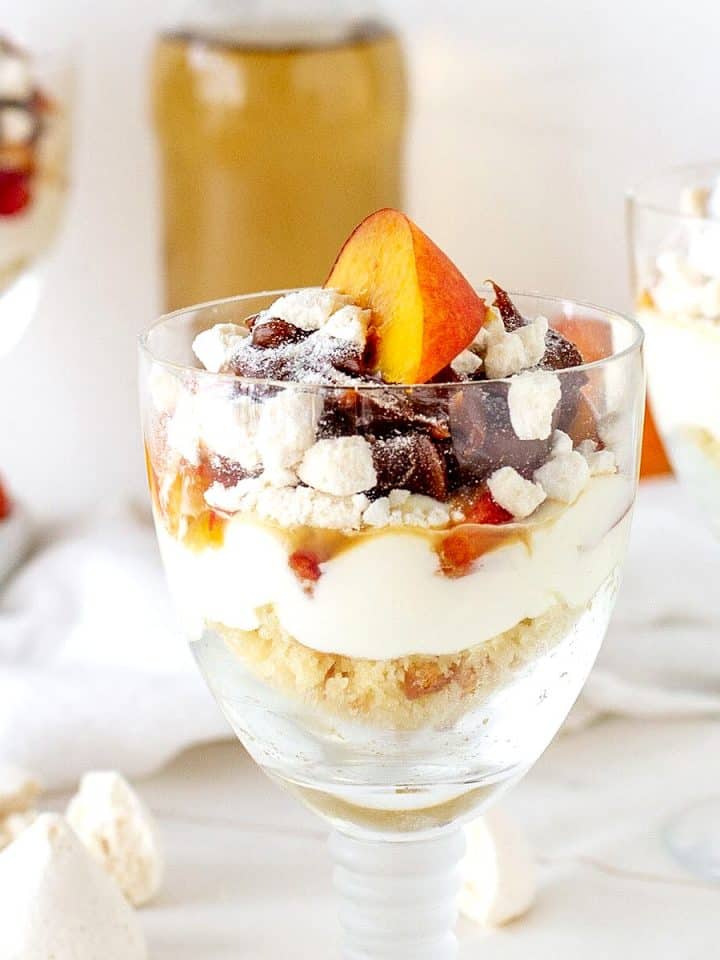
Dragana says
Hello. I want to let you know that I am delighted with the recipe. It was really easy to follow. I managed. I put 1 liter of fresh milk with 4% milk fat and 300g of sugar (my husband likes it sweeter). I cooked for about 2 hours at the lowest temperature so that it was really thick. I had doubts whether to put baking powder or baking soda (language barriers in translating from English to Serbian), so I decided on baking powder. It turned out great, but I want to know if I should put baking powder or sodium bicarbonate? I'm hoping I won't pjest8 until it cools because I made it for Carmelitas and Banoffi. p.s. from 1l and 300g of sugar I got 400ml of dulce de leches. ❤️❤️❤️Thank you for all the recipes and a big greeting from Serbia. Dragana
Ersi says
Greetings from Greece. Trying to watch the viceo but it shows other recipes. Perhaps you could send me a link for this specific dulce di leche recipe?
Thank you in advance.
Paula Montenegro says
Hi Ersi, here is the link to the dulce de leche video.
Olga says
Wld love to make this. Sounds good particularily w/the apple dump cake. Where is the video? Curious about this glass plate.
Paula Montenegro says
Hi Olga, the video autoplays when you scroll and reach the From scratch heading in the post. Here it is if you want to play it: https://vintagekitchennotes.com/dulce-de-leche-recipe-tips/#From_scratch
The plate is added because it moves around while the dulce de leche simmers and you don't have to stir it constantly. Small tricks from very old recipes passed down generations.
Krissy says
Hola! Looks great! I am planning to make soon and reading that there is a video, but I can't find it on this page. Where is the video link at?
Thanks!
Paula Montenegro says
Hi Krissy! Here's the link to the video that is below the title that says 'From scratch'. Happy baking.
Renata says
HI! Thanks for sharing your “from scratch” recipe for dulce de leche. Do you thing it would be possible to use a slow cooker for that? If so, would I keep the lid on? Thanks in advance!
Paula Montenegro says
Hi Renata! I think it can be done, but I haven't tried it. I will try the pressure cooker method at some point and add the results to this post, but I don't own a slow cooker, so I can't really say what can work. I recommend you try googling other recipes that used it. Happy baking!
Moop Brown says
I love Dulce de Leche and really appreciate all of your tips and how easy to understand this recipe is. Thanks!
Rebecca Blackwell says
Dulce de Leche is one of my favorite things in the whole world, but I'd never made it from scratch before. I tried this recipe over the weekend and I don't think I'll ever go back to the canned stuff again. It's absolutely delicious and so easy! Thanks for a great recipe!
Farrukh Aziz says
OMG! the Dulce de Leche was sooooo delicious, and the plate trick worked so well. I am going to make this more often now, homemade ones are always better than the store bought. Thank you for sharing! 🙂
Kushigalu says
Dulce de leche is my all time favorite. Love all the tips and tricks You shared. I will soon try this.
Jenny says
I love your recipe! First of all you had me at Dulce de Leche, I absolutely love this amazing sauce and have never attempted to make it. I devoured your post and recipe, love the tips and tricks, especially the glass marbles in the pan. I smiled when I read that, we actually have some, (loved them when I was a kid and kept them) and will use them making your amazing Dulce de Leche. Thanks a million!
Paula Montenegro says
It's been a while since I heard someone still had glass marbles! Let me know if you make it Jenny, and have a great week.
Aleta says
I am crazy obsessed with Dulce de Leche, but have never been able to make is successfully.. until now! Your tips and tricks were so helpful and I managed to make the most delicious sauce for my cheesecake! Thank you!
Marta says
I love eating my dulce de leche with fresh fruit as a dessert. I did that last night and I must say this is one of the best DDL that I've tasted.
Chef Dennis says
Your dulce de leche recipe was OMG delicious and so easy to make!! I'll be making this regularly
Heidy says
This recipe for Dulce de Leche was outstanding. I have to tell you a secret---it was so darn good I was actually eating it by the spoonful when my husband caught me lol!!! It really goes well on so many things I just love it!!!
Heidy
Gloria says
Wow....I am not showing this to hubby. He would eat this by the spoonful. I know this would taste so much better than store bought.
angiesrecipes says
This is fantastic! I might try it this holiday season 🙂 Love that plate trick 🙂